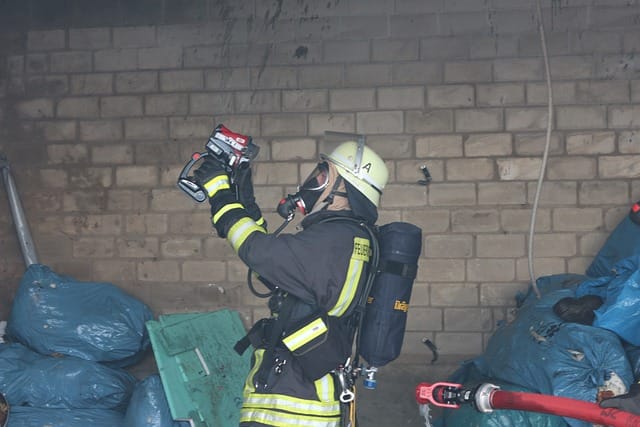Despite the fact that a modern person is faced with a variety of cameras every day, many of us do not notice any particular difference between them. They are not too different in appearance, but the principles of operation, tasks, and capabilities they have are different. We will introduce you to the WiFi Camera, Thermal Camera, and WiFi Thermal View Camera. Perhaps you want to take advantage of the wide opportunities that they provide.
They are easy to manage, and their settings are flexible. Moreover, the cameras will do all the routine work for you, even without your presence. But, as we know, all the interesting and valuable information lies in the details. Our article is devoted to these details—the main features and differences between cameras.
How does a WiFi camera work?
A WiFi camera differs from a regular camera in that it does not use wires to transmit data. The role of the wires was taken over by the wireless data transmission system, WiFi. With its help, the camera connects to the router and transfers information to the data drive. A computer, phone, server, or cloud storage is used as a drive. The user makes a wireless request to the drive and accesses the information. In addition, there is an option without requiring storage space.
Through the mobile application, the owner of the Wi-Fi camera can receive data or control it. In this case, the mobile phone and the camera communicate via Wi-Fi on the Internet. The last option is the most convenient. However, the option with a storage location has an advantage in that it saves data, analyzes it, and sorts it. And the owner receives already-processed information.
In addition to having access to data, the operator also has the ability to remotely control the camera. If it’s a surveillance camera, you can turn it around, let people talk to you through it, make a video, enlarge a part of the screen, etc. Some cameras are compatible with the smart home system.
It should be clarified that the WiFi camera will continue to work even though the Internet signal will be lost. It will write all the information to the internal memory card. When the connection is back up, the information will be put back where it usually is stored.
The best part about this technology is the operator’s wide range of powers, which are realized through the camera’s multi-functional setup. The built-in intelligence can identify people and animals, interact with Alexa and Google Assistant, send alarm messages, guard a given perimeter—there are really an incredible number of scenarios. And all of them can be activated from anywhere on the planet where there is access to the Internet.
The camera differs from other WiFi cameras in that it sees only during daylight hours and is absolutely useless at dusk. At best, she will record the sound, but it will be impossible to see anything.
How does thermal vision work?
Thermal vision works on a different principle. It reads the thermal signatures of all objects and displays them as a color picture. The picture is not static, and all temperature changes are reproduced in real time. In order to collect heat rays, heat sensors are used. Microbolometers are used as sensors and are capable of changing their resistance under the influence of heat.
With the help of the processor, the resistance value is compared with the standard, and the data is converted into colors. Each degree has its own color. Since all surfaces differ in temperature, different shades of color allow you to see all the objects that the sensors look at. Color palettes can be both colored and monochromatic. But each of them highlights warm objects so that they attract attention in the first place. This allows you to quickly detect animals, people, and warm objects in absolute darkness.

The ability to detect warm objects in a cold space is in demand in all areas of our lives. The thermal imaging camera is used for tactical operations, security, hunting, nature observation, and much more. There are models for medical purposes, construction, observation of production processes, research, and navigation.
The whole point of this camera is that it doesn’t need light. The only thing she cares about is the temperature. Therefore, thermal vision sees perfectly at night and during the day. In addition, thermal vision ignores bodies with low heat output, such as small drops of water, snow crystals, thin branches, and grass stalks.
As a consequence, the thermal imaging camera sees a living being under the cover of darkness, even in a blizzard, fog, or rain, despite the fact that it is hiding in the greenery. From this, we can conclude that as long as you emit heat into space, you have no chance to hide from a thermal imaging camera.
WiFi camera with thermal vision
The advantages of the first two technologies have been combined in a new device: a WiFi camera with thermal imaging. The way information was read was based on how a thermal camera works, which was done by analyzing thermal data. Since the data is already digitized, it would be a mistake not to take the opportunity to transfer it. To do this, we used the principle of data transfer, which is in Wi-Fi cameras. That is, files are transferred via Wi-Fi or other wireless means to the location that the user chooses.
Internal memory, a tablet, a touch-screen tablet, or a server are all possibilities. The memory card in the camera is turned on when there is no wireless connection or when the operator asks it to. Just like a WiFi camera, a WiFi thermal camera can be controlled via an app on an Android or iOS platform.
The merger created a high-tech thermal imaging camera that can talk to other devices wirelessly and be controlled from far away. Among other cameras, a WiFi thermal vision camera, such as thermal goggles, stands out because it is independent of light, weather, and temperature and can transfer data over Wi-Fi. It is convenient that it can work according to a given algorithm and make records selectively, which saves space on the storage medium. Many users will be grateful for the capability to transfer streaming video.
All of these cameras have a unique set of features that are improving with every round of technology. Individual settings, ease of operation, and efficient operation make them a welcome addition to any home. But in the end, the future is definitely in the WiFi camera with thermal imaging. It accumulated the most optimal features among the cameras at its level. Modern life is dominated by the desire to put all known innovations into one device. So, the best thing to do now is to learn how to exploit all these unique features to the fullest.











